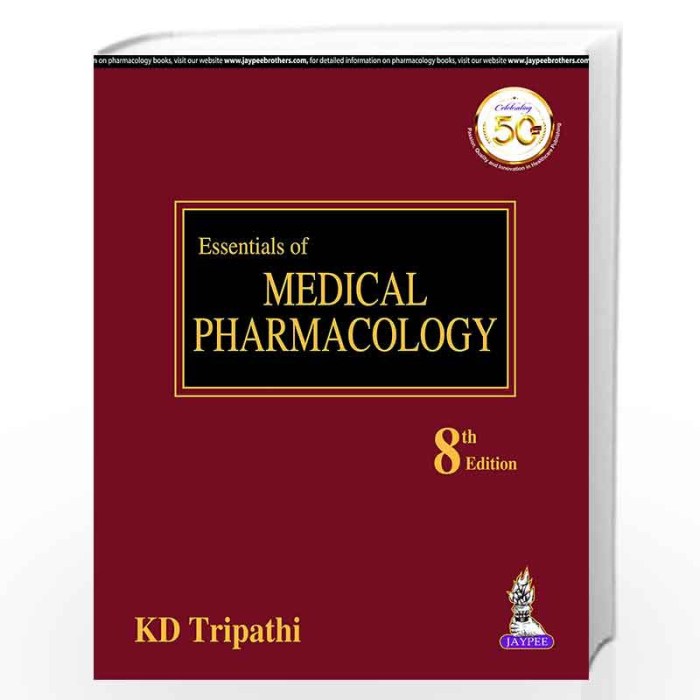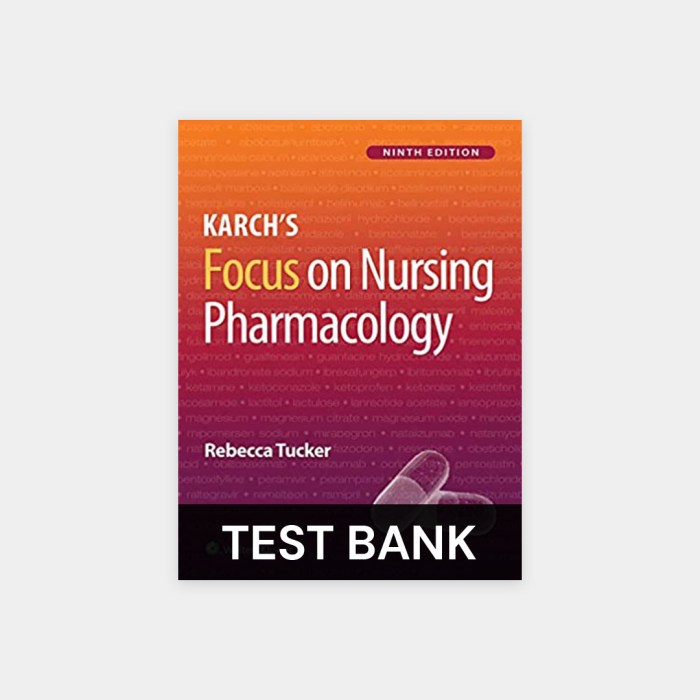Essentials of pharmacology for health professions 9th edition – Introducing Essentials of Pharmacology for Health Professions, 9th Edition, a comprehensive guide to the science and practice of drug therapy. This extensively revised and updated edition provides an in-depth exploration of the principles and mechanisms of drug action, emphasizing their clinical relevance and applications in healthcare professions.
With a focus on the latest advancements and evidence-based practices, this essential resource equips students and practitioners with a thorough understanding of pharmacology’s fundamental concepts and their practical implications in patient care.
1. Introduction to Pharmacology for Health Professions: Essentials Of Pharmacology For Health Professions 9th Edition

Pharmacology is the science of drugs and their effects on living organisms. It is a vital field for health professions, as it provides the foundation for understanding how drugs work and how to use them effectively and safely in patient care.
Pharmacology has several branches, including:
- Pharmacokinetics: The study of how drugs are absorbed, distributed, metabolized, and excreted by the body.
- Pharmacodynamics: The study of how drugs interact with the body to produce their effects.
- Toxicology: The study of the adverse effects of drugs.
- Clinical pharmacology: The study of the use of drugs in humans.
Pharmacology plays a crucial role in patient care by providing the knowledge necessary to:
- Select the right drug for a particular condition.
- Determine the appropriate dose and route of administration.
- Monitor for and manage side effects.
- Educate patients about their medications.
2. Drug Administration and Absorption

Drugs can be administered through various routes, including oral, intravenous, intramuscular, subcutaneous, and transdermal.
The route of administration affects the rate and extent of absorption. Oral administration is the most common route, but it can result in variable absorption due to factors such as food intake and stomach pH.
Intravenous administration results in immediate and complete absorption, making it the preferred route for drugs that need to be delivered quickly or in high concentrations.
Once absorbed, drugs are distributed throughout the body via the bloodstream. They can then bind to receptors on target cells and exert their effects.
The following table compares the characteristics of various drug formulations:
| Formulation | Advantages | Disadvantages |
|---|---|---|
| Tablets | Easy to administer, convenient to store | May be difficult to swallow, can disintegrate in the stomach |
| Capsules | Easy to administer, can contain different types of drugs | May be difficult to swallow, can disintegrate in the stomach |
| Injectables | Rapid onset of action, can be used for drugs that cannot be taken orally | Require trained personnel to administer, can be painful |
3. Pharmacodynamics and Pharmacokinetics
Pharmacodynamics is the study of how drugs interact with the body to produce their effects.
Pharmacokinetics is the study of how drugs are absorbed, distributed, metabolized, and excreted by the body.
These two disciplines are closely related, as the effects of a drug are determined by its concentration at the site of action.
Drug-receptor interactions are a key aspect of pharmacodynamics. Drugs can bind to receptors on target cells and either activate or block them.
The type of interaction determines the effect of the drug. For example, an agonist drug binds to a receptor and activates it, while an antagonist drug binds to a receptor and blocks it.
FAQ Section
What is the primary focus of Essentials of Pharmacology for Health Professions, 9th Edition?
Essentials of Pharmacology for Health Professions, 9th Edition, focuses on providing a comprehensive understanding of the principles and mechanisms of drug action, emphasizing their clinical relevance and applications in healthcare professions.
What are the key updates and revisions included in the 9th edition?
The 9th edition has been extensively revised and updated to reflect the latest advancements and evidence-based practices in pharmacology, ensuring that readers have access to the most current information.
Who is the target audience for this book?
Essentials of Pharmacology for Health Professions, 9th Edition, is designed for students and practitioners in healthcare professions, including pharmacy, nursing, medicine, dentistry, and allied health fields.